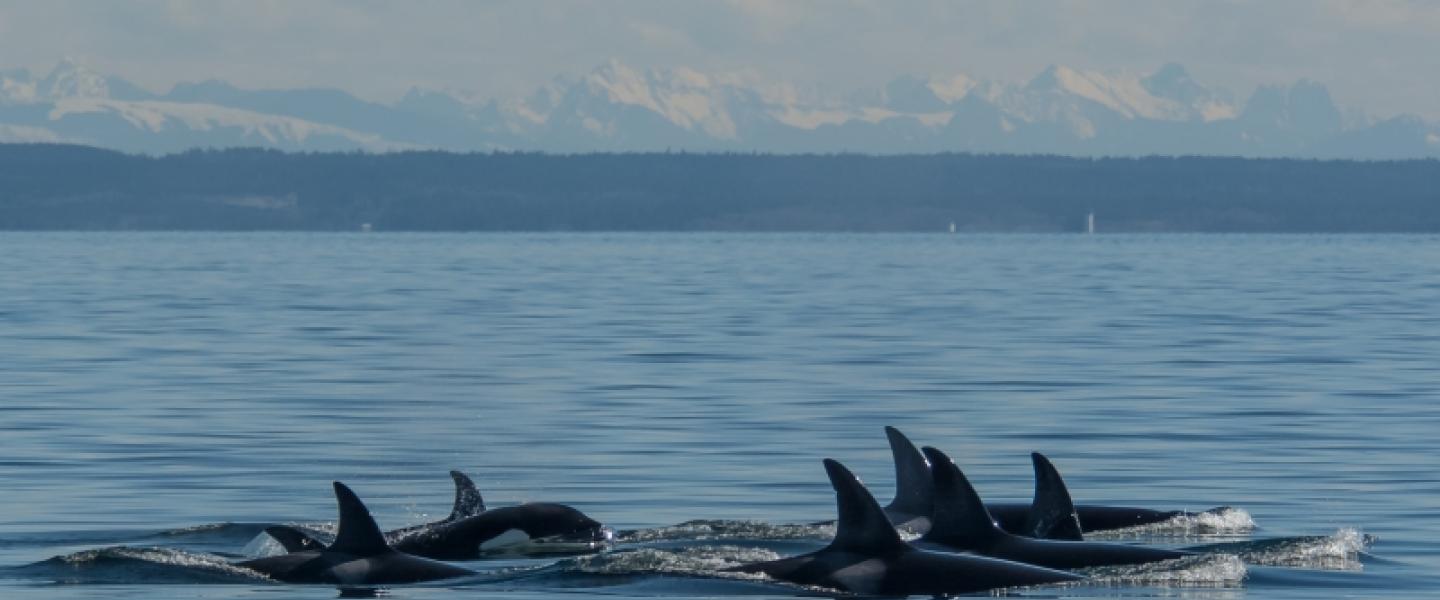
Olivia | M/V Sea Lion | March 22nd, 2021 | 13:00
Today was an unexpected and exceptional spring day in the San Juan Islands. Setting out with an all-female crew, Captain Sara and I started our search by heading north towards Flattop Island, looking at Seal haul out locations and bumping into Boundary Pass, staying on the U.S side of the border. Turning Southwest on our journey, we cut through John’s Pass, aiming for the Haro Strait. It was on this trek that we caught word of Killer Whales traveling north of Lime Kiln Lighthouse, heading towards Henry Island. Just outside of Mosquito Pass, Captain Sara turned off the engine to explain that these were not just any orcas, but the famous and critically endangered Southern Resident Killer Whales.
The Salish Sea has some of the strictest whale watching laws and regulations in the entire world, really aiming to be as sustainable and conservation cautious of our marine life as possible. Every year these regulations are reevaluated regarding the different species and ecotypes that call these waters home. With an ecotype so critically endangered, only having 75 individuals left in the wild at the time of this post (divided between the J, K and L Pods), that means we have firmer county, state, and federal guidelines surrounding them. With any cetacean, it is an obligation as a commercial, research, or private vessel to slow down to under 7kts in speed within a half nautical mile away and keep a viewing distance of whatever is appropriate for the cetacean on scene. This speed has been scientifically proven to be quieter than ambient water noise- that’s rainfall and water currents! AKA, a very respectful and non-invasive way of connecting with wildlife. With these new guidelines surrounding the Southern Resident Killer Whales specifically, we were able to view from over 1000 yards away.
From this distance, we were able to see many spouts, dorsal fins, and even a spy hop from the newest member “Crescent”, J58, who as born this previous fall. I really believe the distance- physically placing ourselves away from one of the most beloved group of animals in the entire world- provided us with a personal and intimate relationship and opportunity to discuss humanity’s impact on the world. That the implications of Chinook Salmon are now negatively affecting not only the Southern Residents, but also inland river systems- the list goes on. I hope the passengers on our boat learned a bit more about conservation and the importance of our humanitarian role, and more importantly, felt something towards sustainability and nature. A good friend of mine once said that one of our biggest mistakes in talking about nature, is discussing in such a way that “it” is separate from ourselves.
It was an emotional day for everyone out on the water. Seeing this ecotype specifically-- the ecotype of Killer Whales that made the Salish Sea famous, that gave San Juan Island its place on the map; the ecotype that turned around our perspectives on orcas being fierce predator/ pests that were meant to be killed and extirpated; the ecotype that stemmed the most research on their intelligence, empathy, grievances, photo identification of all cetaceans, and overall livelihood; the ecotype that guided us to fall in love with a marine species other than ourselves and feel the connection to an underwater world that remains a mystery; the ecotype of killer whales that helped us see there are different “ecotypes” genetically and culturally; THIS group of whales needs our help. And that means salmon. These animals cannot be separated from ourselves; it is part of who we are, and a reminder of what we have become. So we have to ask ourselves, who do we want to be?